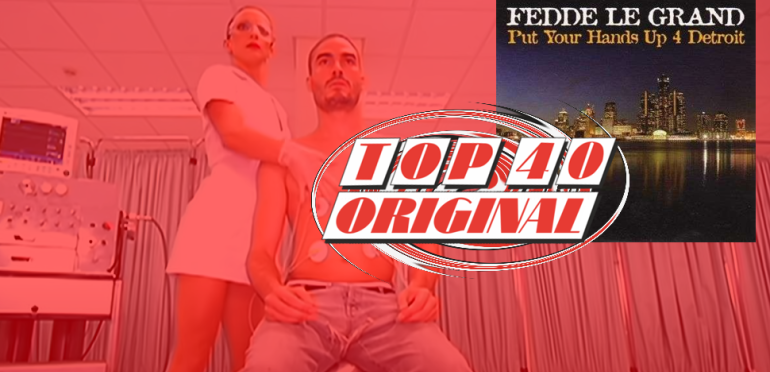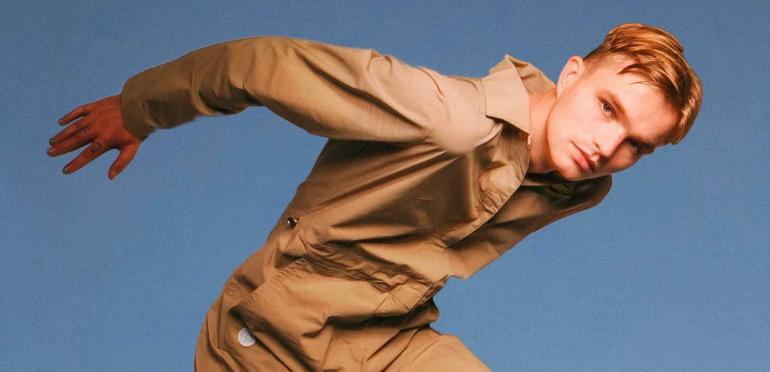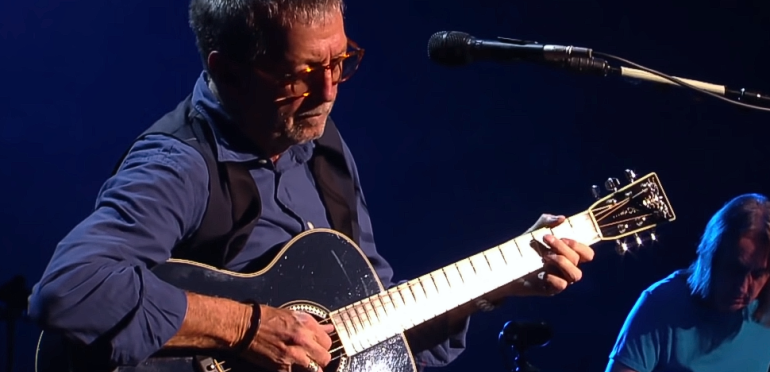In the Maternity Room section, we look back at the journalistic platform that has served as a springboard for talent. For seventeen years, the online music magazine KindaMuzik (1999-2016) was a playground for anyone who wanted to write about music. And to be able to enter, just sending one email is enough. ‘KindaMuzik allowed me to transition into my dream job.’ Click the carousel on the opening photo to see more photos.
Ask former KindaMuzik employees to recall their experiences at the online music magazine, and chances are they’ll immediately start talking about the drink. A mailbag full of CDs would arrive on the desk in the small office in Amsterdam, filled with all kinds of music.
The music journalists in attendance came together to sift through the pile in search of hidden gems. Other times they specifically look for the worst album covers, so they can listen to the accompanying CD together. Then they sat there, listening to the faintest gothic music from Norway.
Read all episodes of the ‘Delivery Room’ section here.
Looking back, we were both ‘music nerds’, as freelance journalist Norbert Pek called it. Pek, who now works for VARA Gids, Top 2000 a gogo and VPRO’s 3voor12, among others, was one of the first people involved in the platform in 2000. He was brought in by founder Niels van der Tang.
‘I studied communications at the University of Twente and have created websites about various bands. Niels emailed that he thought radio station 3FM was going in the wrong direction, and therefore wanted to start an online magazine. And do I want to write for it.’
During editorial drinks (in this case drinks from 2016), bags full of CDs were brought to the table.
Calling KindaMuzik a weblog doesn’t do the site justice. ‘It’s an online magazine. We have a new edition every month. That’s really special. “At that time, many people didn’t even have internet at home,” Pek said.
The magazine is divided into sections (rock, beats, loud and twang, [een type country-muziek, red]). Pek started writing, but also became the rock section coordinator. ‘In those first years we focused on the rest of the world. We also write in English. That changed in 2003 and we switched to Dutch.’
There were so many English-language music sites at that time that KindaMuzik – which at that time had 6,000 daily visitors – shifted its focus and wanted to become the largest Dutch-language online music magazine.
Space to kick your butt
For Pek, KindaMuzik was accidentally his first step into the world of journalism. He has no experience. And actually there was no desire to go into the world of journalism. He wanted to do something with his scientific training. Music journalism is said to be temporary.
‘It’s funny that KindaMuzik took me to a completely different place. Through KindaMuzik I ended up on another music site, De Subjectivisten. There I met Guuz Hoogaerts from Nieuwe Revu, who invited me to do an internship. I can hang in there.’

KindaMuzik was also a springboard for pop journalist Atze de Vrieze, who is now an editor at 3voor12. When he started working at the online magazine in 2004, he was working in a record store.
One email is enough to get started at KindaMuzik. ‘I think it’s absolutely crazy. You receive free CDs, can go to concerts for free, and meet all kinds of people who are just as crazy about music as you are.’
De Vrieze also does work for KindaMuzik, in addition to ‘all the kind of office work you do to pay for your groceries’. ‘It was a really good learning experience. It also gives you space to express yourself. I still remember the interview I did Mike Skinner of the Street, an English band. He did several interviews in one day and when my turn came, he was completely uninterested in it. He was so annoying, just lying on the sofa in his hotel room. Such situations also teach you how to approach such conversations. How do you enter a hotel room, what energy do you exude, how do you try to differentiate yourself from eight other interviews in one day? Finding that balance means learning the trade.’
With notepad in call box
In the end, De Vrieze stayed for two years. He then started working at 3voor12, where he did the same thing he did at KindaMuzik: writing about music and coordinating the editorial team. An important difference: at 3voor12 he has been and will be paid.
De Vrieze: ‘KindaMuzik allowed me to transition into my dream job.’ Work for KindaMuzik is done on a voluntary basis for everyone involved. Something that wasn’t immediately obvious to Roberto Lobosco when he applied for a job in 2006. But his love for music turned out to be quite great. “You get the chance to interview your music heroes.”

Lobosco remembers some of those interviews well. Like his conversation with Karl Hyde, frontman of electro music group Underworld. “It has to be done over the phone. But calling England was expensive, especially with the prepaid phone I had in 2006. So I went to a Turkish “call house,” a building with a telephone booth where Dutch Turks called their families. I stood there. In a booth like that. With my notebook. Another time, in 2008, I traveled to Hilversum with a colleague to interview record boss Kees de Koning of Topnotch, the biggest hip-hop label in the Netherlands. But once we got there, Kees told us that he actually had to go home. So we drove with him and did the interview in the car.”
That colleague was Thomas Heerma van Voss, now a famous writer, according to Lobosco, ‘still a 17-year-old kid who still carried a discman while most of the others already had MP3 players’. Lobosco himself now works at Human Broadcaster as editor-in-chief.
‘At KindaMuzik, apart from writing, I am also a coordinator. It was my first chef position. In that position I had the opportunity to work with many passionate people, who all wanted to make beautiful things. It’s not for nothing that I lasted six years.’
Damn about the rules
There is no shortage of talent featured on KindaMuzik. The list is long, with names like René Passet (who read traffic jam information on ANWB radio for 25 years), Hans Wetzels (cultural scientist and journalist), Jelmer de Haas (photographer), Nozzman (illustrator, etc.) . for Algemeen Dagblad), Theo Ploeg (pop journalist) and Wilko van Iperen (head of digital at BNNVara). Some of them are also honored in the ‘Hall of Fame’, a separate section on the KindaMuzik colophon page.
Although the online magazine closed in 2017, an archive of 26,337 articles remains completely online. As if frozen in time.
Not all former KindaMuziks end up continuing in music journalism. Daniël Verlaan, investigative journalist at RTL Nieuws, studied writing there, but also learned how to let go of his dream of becoming a music journalist.
‘KindaMuzik hired me without any experience. I was a first year student in journalism school and dreamed of reviewing CDs and writing columns. I like writing and music. Many aspiring journalists often choose their own interests as subjects to write about.’

Verlaan worked for the online magazine from 2008 to 2012. He recalls the camaraderie of the editorial office. “We are all music nerds. A bit of an outsider. Unique types. It really made me feel like I was at home. But writing about music ultimately isn’t for me. The work I write isn’t always good.’
Big boys cry, but even more so girls. The lights were on and the eyes were as red as the chairs at Fort Vredenburg
Verlaan laughed while picking up one of his old KindaMuzik works, concert review by Bon Iver. ‘Listen: “Big boys cry, let alone girls. The lights were on and his eyes were as red as the chairs in Vredenburg.” It’s a shame, it’s terrible.’

KindaMuzik mostly revolves around types like Verlaan, a young dog who loves music. According to photographer Renate Beense, who was active at KindaMuzik from 2008 to 2016, this made the online magazine rebel. He was in his early 30s when he became active in KindaMuzik.
‘My girlfriend at the time worked at KindaMuzik. I got involved through him. We often go to concerts together. I learned a lot about how to take good portrait photos. And at first I also found stage photography very addictive: you are constantly looking at the lights and looking for beautiful moments. You learn to switch very quickly. I still benefit from it now. I’m still trying to capture the moment now.’
‘Not bound by rules’
KindaMuzik editors are proud to work for the online music magazine, said Beense. ‘It is also not bound by any rules. You can go your own way. I still remember the concert, I thought, Paul Weller. The press is prohibited there. As KindaMuzik, we just buy the tickets ourselves and write the article anyway.’
Damn about the rules, Beense said. Roberto Lobosco also recalls that side of the rebellion. ‘In a magazine like Oor, everything is bound by rules. We don’t have a problem with that. At KindaMuzik you can do whatever you want.’

“Falls down a lot. General tv buff. Incurable zombie fan. Subtly charming problem solver. Amateur explorer.”







